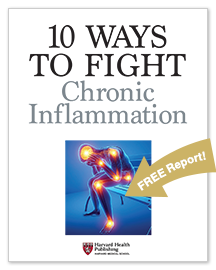Easy does it with vitamin E
Swallowing an amber-colored vitamin E capsule has long been a daily ritual for millions of American women. It may be time to stop.
Today vitamin E is one of the most widely used supplements, taken regularly by nearly a quarter of adults ages 55 and over. Its popularity derives from studies over the years suggesting that vitamin E’s antioxidant properties could help stave off common age-related ills, such as heart disease, cancer, and cataracts. Many health care professionals were personally on board, taking the supplement as well as recommending it. Although there was no proof of its effectiveness, the consensus was, “It might help, and it couldn’t hurt.”
To continue reading this article, you must log in.
Subscribe to Harvard Health Online Plus (HHO+) to unlock expert-backed health insights, personalized tools, and exclusive resources to feel your best every day.
Here’s what you get with your HHO+ membership:
- Unlimited access to all Harvard Health Online content
- 4 expertly curated newsletters delivered monthly
- Customized website experience aligned to your health goals
- In-depth health guides on topics like sleep, exercise, and more
- Interactive features like videos and quizzes
- Members-only access to exclusive articles and resources
I’d like to subscribe to HHO+ for $4.99/month to access expert-backed content to help make smart, informed decisions about my well-being.
Sign Me UpAlready a member? Login ».
Disclaimer:
As a service to our readers, Harvard Health Publishing provides access to our library of archived content. Please note the date of last review or update on all articles.
No content on this site, regardless of date, should ever be used as a substitute for direct medical advice from your doctor or other qualified clinician.












